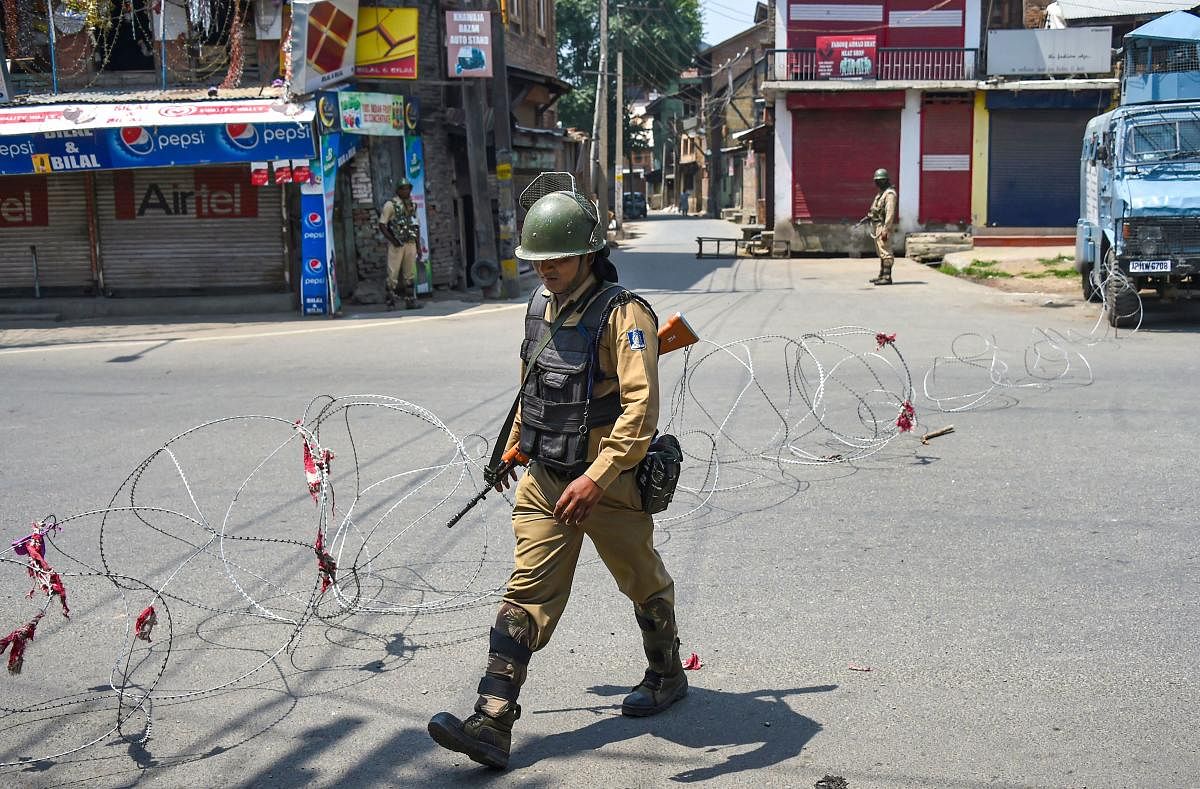Soon after Jammu and Kashmir Governor Satya Pal Malik announced that the Hurriyat leaders are ready for talks with the central government to find a political solution for the conflict in Kashmir, Home Minister Amit Shah made a two-day trip to the state. However, he did not meet any political leaders and chose not to comment on the governor’s statement. Is the time now ripe for peace in Kashmir?
Despite sporadic incidents of violence and occasional encounters between the security forces and terrorists, militarily the situation in J&K is now better than it has been at any time since the Modi government came to power in May 2014. A sense of normalcy has returned to the Kashmir Valley with schools, colleges and hospitals open, commerce flourishing and tourists beginning to throng their favourite places once again. Over three lakh pilgrims are expected to complete the Amarnath Yatra this summer. In the Jammu region, too, violence is at a low ebb.
There has been a relative decrease in the number of incidents of violence this year, though there has been only a slight let up in attempts at infiltration across the Line of Control (LoC). The number of trained and armed terrorists has come down to less than 500, with about 200 to 300 each in Kashmir Valley and the Jammu region. However, not all of them are now active. Sleeper cells are lying low and waiting to strike at a more opportune time. In counter-infiltration operations, the aim is not deterring infiltrators but their destruction.
Unable to fight simultaneously on three fronts — proxy war against India, the al Qaeda-Taliban combine within Pakistan, and the vicious internal instability — the Pakistan army and the ISI appear to have ordered a “tactical freeze” in J&K. However, the Pakistan army’s grand strategy of wresting Kashmir from India and “bleeding India through a thousand cuts” has not changed; only the tactics have changed as the Pakistan army is itself bleeding profusely — mainly from self-inflicted wounds. The infiltration machinery is being kept well-oiled so that the ISI can raise the ante whenever it chooses to do so in future.
The terrorists remaining in J&K no longer enjoy the support of the people — except for some hired stone-pelters — and are being increasingly resisted. Indian Kashmiri militant groups are now relying less on violence and more on other means, like killing soldiers on leave and policemen, influencing viewpoints through coercion of the local media, prevailing on bar associations to file human rights abuse cases and nudging some of the political parties to carry forward the agenda of separatism.
Besides inadequate socio-economic development, inadequate governance is a major factor that is fuelling conflict as it is readily exploited by terrorists.
After some loose talk of “demilitarisation”, Kashmiri political leaders have realised that this term is really applicable only to the LoC. As and when the LoC is accepted as a permanent border between India and Pakistan, it will be up to the negotiating teams of the two countries to plan a phased demilitarisation of troops deployed to defend it against aggression. The term “disengagement” is more appropriate for discussing the force levels of the army and other security forces in the hinterland of J&K.
The army is conscious of the fact that in case the situation continues to improve, it must gradually reduce the number of active forces and that it will be counter-productive not to do so. At present, the situation is not conducive to any major reduction in the number of army troops deployed for counter-insurgency operations.
As the army commences the process of thinning out, its place must be taken by the J&K Police and the central armed police forces (CAPF) such as the CRPF. These forces are still not in a position to take over the responsibility for maintaining security in the hinterland.
It will take another five to seven years for these state and central forces to gain the confidence necessary to fight well-armed and well-trained terrorists who enjoy external support. However, army battalions camping in public places like school compounds are being moved out and the premises are being handed over to the local authorities. Also, cases of inadequate compensation are being examined jointly with the civil authorities and redressal is being given where due.
Perception management is a neglected field that needs to be urgently addressed. The majority in J&K is no longer interested in joining Pakistan or even in seeking “azadi”. People will gladly settle for a just and equitable political package that addresses their feelings of alienation. They are likely to accept political autonomy that gives them the right to self-governance.
The continuing lack of political will to find a solution to the people’s problems is a major stumbling block. This is perhaps due to the complexities of coalition politics — the PDP-BJP coalition government had failed to make any headway. The central government must continue to engage with all the political parties that are willing to participate in elections to the J&K Assembly to determine the contours of a political and socio-economic settlement of the complex challenge confronting the nation. It must encourage the constituent members of the Hurriyat Conference to also join the political mainstream and participate in the forthcoming elections.
Clearly, there is a need to evolve a long-term political-military strategy that simultaneously addresses political, diplomatic, economic, social and psychological issues. The government must enter into a sustained dialogue with all the parties concerned to resolve the conflict in Kashmir, based on the principles of Jamhooriyat, Insaniyat and Kashmiriyat.
Though the road to peace is still uphill, there is hope on the horizon in Kashmir. Losing this opportunity may prove to be an insurmountable setback.
(The writer is former Director, Centre for Land Warfare Studies, New Delhi)
